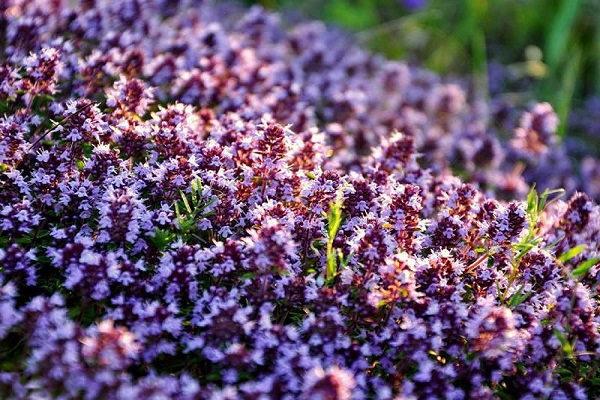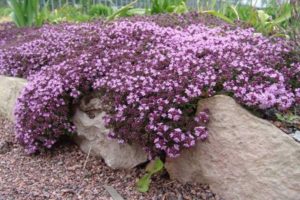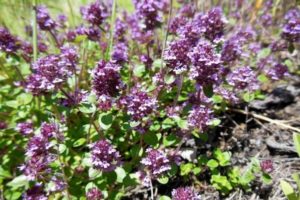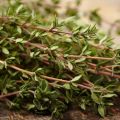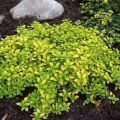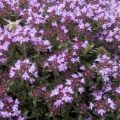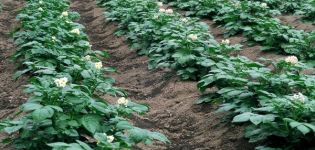Growing and caring for creeping thyme outdoors
The cultivation of creeping thyme is a process that does not have complicated stages. To get a positive result, it is enough to know the rules of planting and caring for the plant. Creeping thyme or thyme is one of the amazing representatives of the flora. Culture is used not only in landscape design, but is also appreciated for a lot of positive properties.
Specificity of creeping thyme
The features of the plant are its beneficial properties. Medical professionals advise using thyme for the following conditions:
- fever;
- bloating and intestinal cramps;
- neurosis;
- neuralgia.
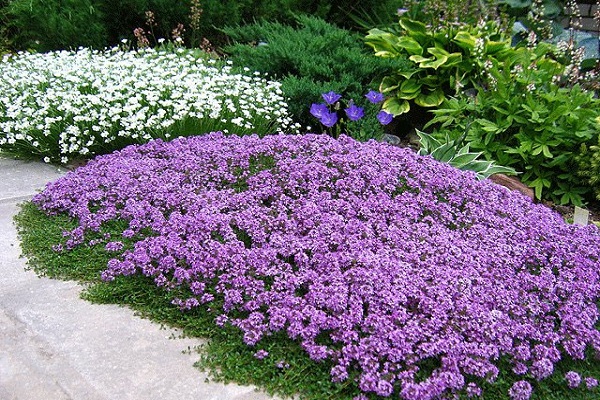
The culture is used as an anticonvulsant and disinfectant. Regular use restores the intestinal microflora. As a result, the gastrointestinal tract is normalized. Thyme also has a diuretic effect.
The aboveground part of the culture has healing properties. The composition of the plant is rich in useful substances. Thyme contains:
- acids: ursolic, thymic, quinic, oleonolic, coffee and chlorogenic;
- plant polyphenols;
- resin;
- essential oil;
- bitterness;
- tannins.
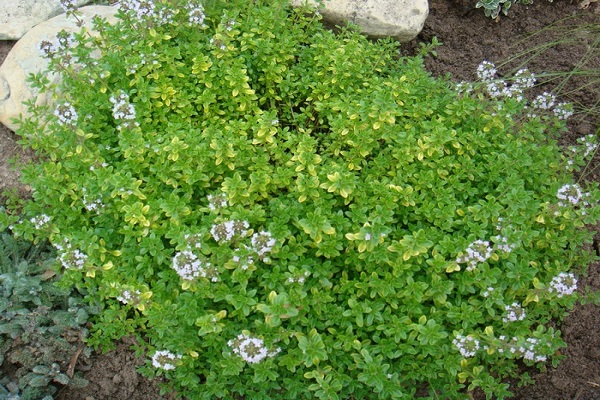
Thyme is often planted near apiaries, as it is considered an excellent honey plant .. The culture has a wonderful aroma and unique taste. Due to its fragrance, many perfumers use the plant to create perfumes.
Combination with other plants
Thyme is a real find for group plantings. Allows you to create a background on which plants with textured leaves will look advantageous. Thyme complements the overall picture. If a person is planting yellow flowers, choose creeping thyme to create contrast.
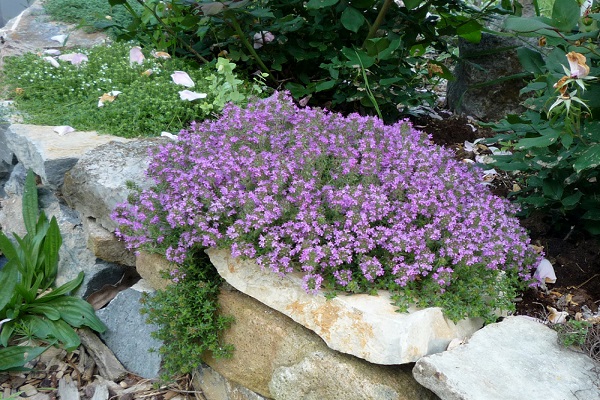
The powerful aroma of the culture attracts a large number of insects that pollinate the plant. This feature has long been noticed by gardeners and use it as a little trick. They plant thyme near cucumber beds. Bees are attracted to the smell and they pollinate other vegetable crops to help growers.
Types and varieties
Thyme is a defective shrub that stands out for its short stature. The height of the plant does not exceed 15 cm. Creeping thyme got its name due to its property to creep along the ground, forming a lush carpet of flowers and greenery. Flowers of a bright purple hue are collected in capitate inflorescences.

Gardeners often choose creeping thyme for decorating a summer cottage. Due to the peculiarity of blooming throughout the summer, the culture is used in landscape design. Most often, people choose these varieties:
- Donna Valley - the culture grows so much that it looks like a carpet of pink flowers.
- Colchis - the plant spreads low over the ground, forming small lilac flowers.
- Silver Queen - differs from other varieties of thyme in the gray color of the leaves, framed by a white edging.
In the latter case, the inflorescences are very densely located. Flowers are painted in a lavender shade.

Creeping thyme is one of the varieties of thyme, among which you can also find:
- Ordinary. The growth of the culture ranges from 5 to 10 cm. A branch with small leaves below looks like a downy. The hue of the flowers of the plant changes from white to pale lilac.
- Lemon-smelling. Can be planted both in early spring and autumn. The name of thyme was formed because of the delicate aroma, which contains lemon notes. Young leaves are colored yellow. Allocate varieties:
- Bertram Anderson - with green leaves dotted with yellow spots.
- Aurea - has a bright yellow color.
- Early. The flowering of the plant begins long before the appearance of flowers in other varieties. Unfortunately, the culture fades faster than others. The country is engaged in the cultivation of such varieties:
- false-fluffy thyme - green leaves with excessive pubescence at the tip, slightly sharp;
- Minor - small leaves are also covered with villi, the plant is slow growing.
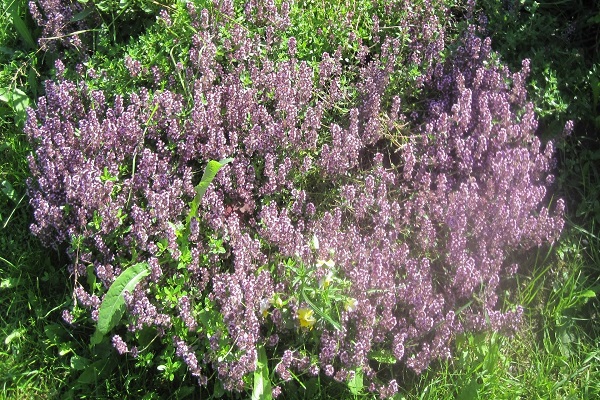
Propagation of thyme
You can get a new culture in several ways - by cuttings, from seed and dividing the bush. The latter option is considered one of the easiest, but at the same time traumatic for the plant. A healthy bush is dug up and the root is cleared from the soil. Divided into several parts, which are immediately planted in open ground.
No less popular is the method of propagating a culture using cuttings. Thyme sprigs are prepared in spring or autumn. Those that have been cut from a full-fledged plant are suitable for planting. Before planting, the lower part is cleaned of leaves and planted in moist soil to accelerate the growth process. Thyme takes root quickly and does not require much human effort.
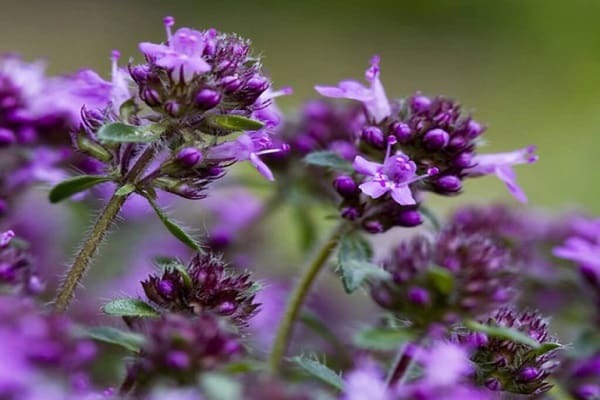
Planting thyme outdoors
It doesn't take a lot of effort to grow a plant in your garden and get a fluffy carpet. Culture is a real decoration for curbs, flower beds and rocky hills. Ornamental thyme leaves are very beautiful and can complement the overall picture with an incredible aroma. It fills the garden with a delicate scent, giving the atmosphere a mystery.
For the full development of culture, it is necessary to create special conditions. If everything is done correctly, thyme will delight the eye with abundant flowering and saturate with useful substances. The flower beds set aside for growing thyme should be in direct sunlight. If there is not enough light, the bushes of the plant will lose their visual appeal. In the shade, the stems stretch out and become thin, the flowers of the culture become smaller and fade ahead of time.

Planting at home
Before planting thyme, the soil is prepared. The earth should be light and allow moisture to pass through well. Neutral acidity is encouraged. The soil must have good fertility.
In autumn, the top layer of soil is dug up and lime is added. It should be dry and thoroughly mixed with the ground. Then a substrate for the plant is prepared, which consists of rotted leaves, river sand, black soil and humus. Before the planting of the crop, the land is enriched with organic matter, last year's manure or organic fertilizers.
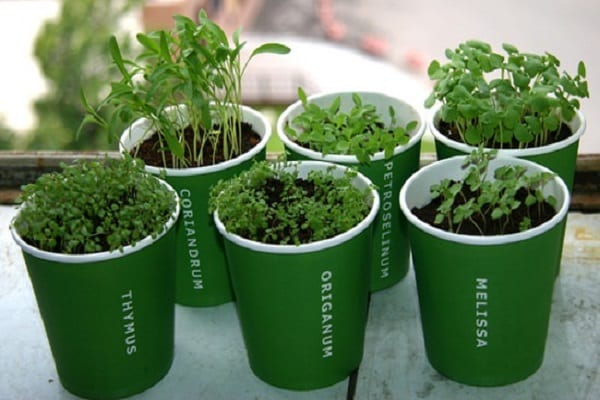
Disembarkation is done in one of two ways:
- seeds;
- seedlings.
Thyme seeds are sown in open soil in the spring, when the air and earth have warmed up a little. It is recommended to sow the planting material at an air temperature not lower than +13 ° C. Dig up the flowerbeds, and mix the earth with the prepared substrate and level. Add seeds, sprinkle with a thin layer of river sand and water.
As soon as the first shoots of the plant appear and they reach 3 cm in height, they proceed to planting. This condition is necessary for the thyme to grow and develop fully. There should be at least 30 cm between each bush. If conditions are right, thyme will delight you with rapid growth.

In open ground, thyme is planted in the form of seedlings. To obtain sprouts, seeds are used, which are placed in specially designated containers. Planting culture is carried out in mid-February.
Plant care
A perennial culture does not need complex agricultural techniques. All that is required of a person is to choose a suitable site and prepare it. In the future, the regime of irrigation and fertilization is observed. Do not forget about weed management as well.
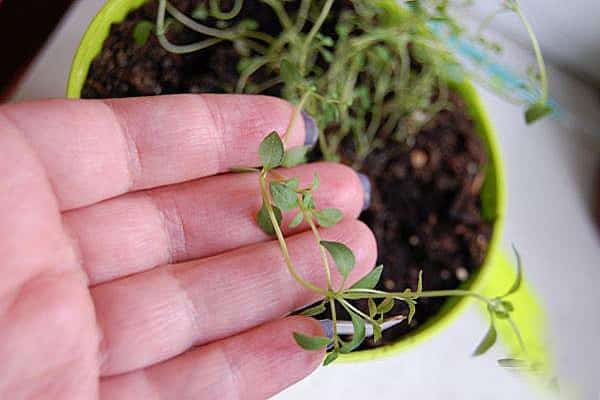
Watering
The plantings are constantly weeded so that the weeds do not interfere with the growth of the crop. After watering, the soil must be loosened in order to avoid the formation of a soil crust. Thyme should not be poured, but keeping the soil dry is also not recommended. It is necessary to exclude the possibility of drying the soil, it should be soft, not wet. Despite the ability to withstand cold winters, light cover will not interfere with the culture.
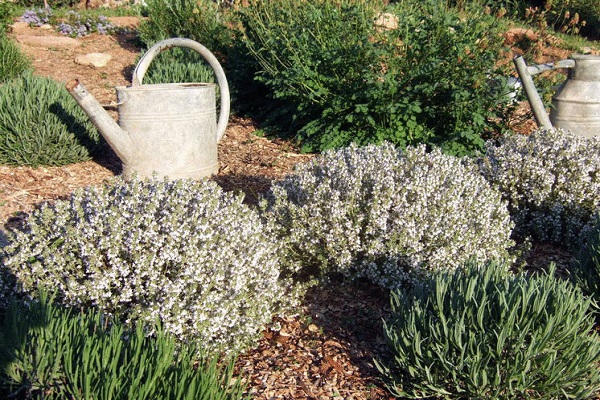
Top dressing
Thyme can be left without dressing, but if possible, the procedure is done. In early spring, urea is added, and when cutting greens, use azophoska. If thyme grows on the site for the second year, mineral fertilizers or mullein are added to the ground. The culture responds well to wood ash, periodic application reduces the acidity level. Thyme strongly dislikes fresh manure.
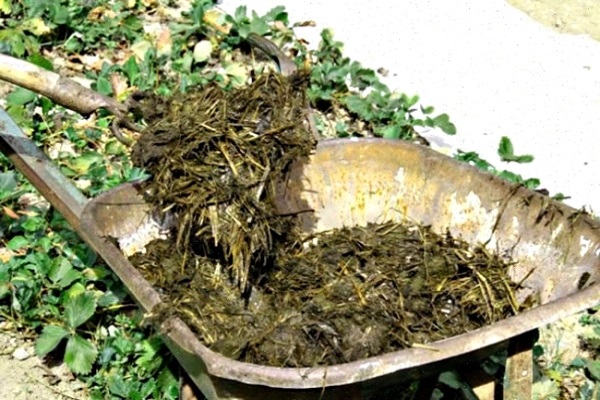
Diseases and pests
Proper planting and the necessary care exclude the development of diseases in the plant. Planting in open ground is fraught with such pests for the culture:
- meadow moth;
- sandy linger;
- weevil;
- aphid.
Insecticides help get rid of insects. Most often, the plant suffers from a fungus. Fortunately, the culture can be healed and restored to its original appearance. Treatment - minimal watering, weeding, sunshine.
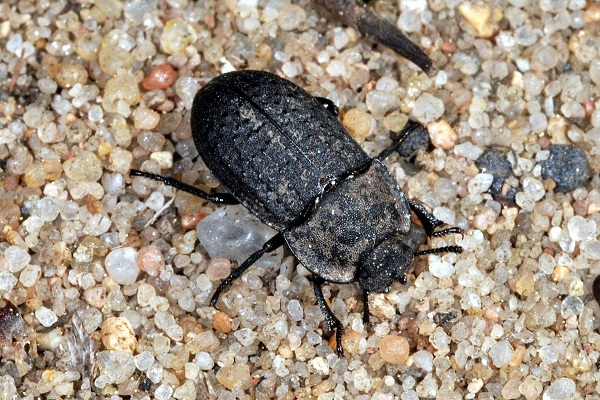
Harvesting
According to tradition, it is customary to collect thyme on Trinity. The people believe that it is on this day that he has the greatest strength. Harvesting greens must be done during the flowering period. The most leafy twigs are cut with a sharp knife. In no case should the culture be broken off so as not to damage it.
Then the twigs are dried, like the rest of the herbs. They are laid out on strips of natural fabric or tied in bunches under the ceiling. The most suitable place for drying is the attic of the house. When the plant is dry, it can be used for its intended purpose - to decorate the room and make healthy drinks.
